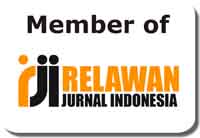Teacher’s Beliefs and Practice of Learner-Generated Material in a Flipped-Speaking Class
Abstract
The practice of learner-centered approach (LCA) in enhancing foreign language teaching-learning process has been broadly recognized. Little research, however, have disclosed how this approach works and promotes learners’ improved abilities. While learner-generated material (LGM) is a principle of and one of the activities in learner-centered approach, it is currently under studied, thus little researchers discuss how it applies in EFL context. This qualitative case study investigated the teacher’s belief and classroom practice of learner-generated material in a flipped speaking class. The participant of the study was a teacher in a vocational high school. The instruments were participant observation, semi-structured interview, and documentation. The analysis showed that the teacher’s belief was mostly consistent with her classroom practices, i.e. beliefs about learning objectives, teaching modeling, and procedure of learner-generated material, teaching resources, classroom management, teacher’s role, students’ role, and assessment. Nevertheless, there were little discrepancies, e.g. teachers’ beliefs about classroom procedure. The present study recommends that teachers, especially those new to LGM, follow the present findings in order to recognize the aspects within LGM in the umbrella of LCA and understand how these methods practices. The implication of the study is this research will give a contribution in Indonesian ELT context by providing a new perspective of learner-centered approach through technology.
Keywords
Full Text:
PDFReferences
Al Zu’be, A. F. M. (2013). The Difference between the Learner-Centred Approach and The Teacher-Centred Approach in Teaching English as A Foreign Language. Educational Research International, 2 (2), 24-31.
Aradhanawaty &Madjid. (2016). The Teaching of English Oral Communication in the Application of Curriculum 2013. Langkawi, 2 (1), 63-82.
Bremmer, N. (2019). From learner-centred to learning-centred: Becoming a ‘hybrid’ practitioner. International Journal of Educational Research, 97 (1), 53–64.
Chen, G & Lui, P. (2012). Comparisons of learner-generated versus instructor-provided multimedia annotations. The Turkish Online Journal of Educational Technology, 11 (4), 72-83.
Chen, W. (2017). The effect of conversation engagement on L2 learning opportunities. ELT Journal, 71 (3), 329-340.
Chin, A & Clark, D. B. (2013). Learning through collaborative argumentation. New York: Taylor & Francis.
Cockrum, T. (2013). Flipping Your English Class to Reach All Learners: Strategies and Lesson Plans. New York: Routledge.
Edstrom, A. (2015). Triads in the L2 classroom: Interaction patterns and engagement during a collaborative task. System, 52 (2), 26-37.
Engin, M. (2014). Extending the flflipped classroom model: Developing second language writing skills through student-created digital videos. The Journal of Scholarship of Teaching and Learning, 14(5), 12-26.
Hutchinson, T., and Waters, A. (1987). English for Specific Purposes: A Learner Centered Approach. New York: Cambridge University Press.
Javid, C. Z. (2015). English for Specific Purposes : Role of Learners , Teachers and Teaching Methodologies. European Scientific Journal. 11(20), 17–34.
Lee, I. (2010). Writing teacher education and teacher learning: Testimonies of four EFL teachers. Journal of Second Language Writing, 19 (2): 143–157.
Nuhamsih, Y & Syahrial. (2017). Evaluation of English Teaching Materials used at a Vocational High School Based on Cunningsworth’s Checklist. Journal of Applied Linguistics and Literature. 3 (2), 33-46.
Sabah, S. & Du, X. (2018). University Faculty’s Perceptions and Practices of Student Centered Learning in Qatar: Alignment or Gap?. Journal of Applied Research in Higher Education, 10(4), 514-533.
Schweisfurth, M. (2015). Learner-Centred Pedagogy: towards a Post-2015 Agenda for Teaching and Learning. International Journal of Educational Development, 40 (2015), 259–266.
Soenarto, S., Amin, M., & Kumaidi, K. (2017). An evaluation of vocational high schools in Indonesia: A comparison between four-year and three-year programs. Research and Evaluation in Education, 3(2), 106-113.
Webb, M., Doman, E., & Pusey, K. (2014). Flipping a Chinese university EFL course: What students and teachers think of the model. The Journal of Asia TEFL, 11(4), 53–87.
Widodo, H. P. (2006). Approaches and Procedures for Teaching Grammar. English Teaching: Practice and Critique, 5(1), 122–141.
Yamagata, S. (2018). Comparing Core-Image-based Basic Verb Learning in an EFL Junior High School: Learner-Centered and Teacher-Centered Approaches. Language Teaching Research, 22(1), 65–93.
DOI: http://dx.doi.org/10.31332/lkw.v6i1.1675
Copyright (c) 2020 Lailatun Nurul Aniq, Khairani Dian Annisa, Diah Kristina

This work is licensed under a Creative Commons Attribution-ShareAlike 4.0 International License.
Langkawi: Journal of The Association for Arabic and English indexed by:



















.png)
.png)

.png)
2.png)








